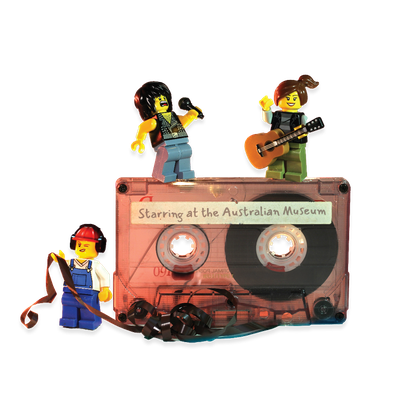Your search returned 12421 results
By Page Type
By Tag
- fish (966)
- blog (698)
- fishes of sydney harbour (401)
- First Nations (296)
- Blog (236)
- AMRI (169)
- archives (165)
- Aboriginal and Torres Strait Islander (135)
- Eureka Prizes (134)
- insect (126)
- Ichthyology (124)
- geoscience (109)
- minerals (102)
- climate change (97)
- podcast (94)
- Fish (91)
- Anthropology (89)
- International collections (80)
- Minerals Gallery (78)
- wildlife of sydney (78)
- Labridae (77)
- frog (73)
- gemstone (70)
- photography (67)
- history (63)
- Mollusca (60)
- staff (60)
- gem (59)
- Birds (56)
- Gems (56)
- Indonesia (56)
- education (55)
- shark (55)
- AMplify (54)
- people (53)
- exhibition (51)
- earth sciences (50)
- past exhibitions (50)
- Gobiidae (48)
- Pomacentridae (45)
- sustainability (45)
- Serranidae (44)
- science (44)
- lifelong learning (42)
- Earth and Environmental Science (41)
- Syngnathidae (41)
- Ancient Egypt (40)
- Bali (40)
- bird (40)
- dangerous australians (40)
-
On the status of the Australian serranid fishes Epinephelus ergastularius Whitley and E. thompsoni Whitley
https://journals.australian.museum/randall-et-al-1993-rec-aust-mus-451-2531/On the status of the Australian serranid fishes Epinephelus ergastularius Whitley and E. thompsoni Whitley
-
Taxonomy of Dendrolagus goodfellowi (Macropodidae: Marsupialia) with description of a new subspecies
https://journals.australian.museum/flannery-1993-rec-aust-mus-451-3342/Taxonomy of Dendrolagus goodfellowi (Macropodidae: Marsupialia) with description of a new subspecies
-
Historic and scientific documentation of a one hundred year old rock collection, now supported by a computer catalogue database
https://journals.australian.museum/barron-1992-rec-aust-mus-suppl-15-129135/Historic and scientific documentation of a one hundred year old rock collection, now supported by a computer catalogue database
-
Morphological and ecological disparity in naraoiids (Arthropoda) from the Early Cambrian Chengjiang Fauna, China
https://journals.australian.museum/chen-et-al-1997-rec-aust-mus-491-124/Morphological and ecological disparity in naraoiids (Arthropoda) from the Early Cambrian Chengjiang Fauna, China
-
A tetrapod fauna from the Permian of the Sydney Basin
https://journals.australian.museum/warren-1997-rec-aust-mus-491-2533/A tetrapod fauna from the Permian of the Sydney Basin
-
Wildlife conservation in the south-east forests of New South Wales
https://journals.australian.museum/pyke-and-oconnor-1991-tech-rep-aust-mus-5-137/Wildlife conservation in the south-east forests of New South Wales
-
Redescription of Calohelcon Turner (Insecta: Hymenoptera: Braconidae), description of a new species, and a reappraisal of the significance of certain character states in the Helconinae
https://journals.australian.museum/quicke-and-holloway-1991-rec-aust-mus-432-113121/Redescription of Calohelcon Turner (Insecta: Hymenoptera: Braconidae), description of a new species, and a reappraisal of the significance of certain character states in the Helconinae
-
Salticidae (Arachnida: Araneae) of Oriental, Australian and Pacific Regions, V. Genus Holoplatys Simon, 1885
https://journals.australian.museum/zabka-1991-rec-aust-mus-432-171240/Salticidae (Arachnida: Araneae) of Oriental, Australian and Pacific Regions, V. Genus Holoplatys Simon, 1885
-
Australian Thaumaleidae (Insecta: Diptera)
https://journals.australian.museum/theischinger-1986-rec-aust-mus-386-291317/Australian Thaumaleidae (Insecta: Diptera)
-
Some majid spider crabs from the deep Indo–West Pacific
https://journals.australian.museum/griffin-and-tranter-1986-rec-aust-mus-386-351370/Some majid spider crabs from the deep Indo–West Pacific
-
Discover more
2025 Australian Geographic Nature Photographer of the Year
Special exhibition
Opens 25 October -
Find out more
Burra
Permanent kids learning space
10am - 4.30pm![]()
-
Discover more
Minerals
Permanent exhibition
Open daily![]()




